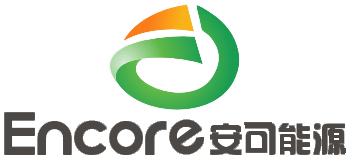- English
- Español
- Português
- русский
- Français
- 日本語
- Deutsch
- tiếng Việt
- Italiano
- Nederlands
- ภาษาไทย
- Polski
- 한국어
- Svenska
- magyar
- Malay
- বাংলা ভাষার
- Dansk
- Suomi
- हिन्दी
- Pilipino
- Türkçe
- Gaeilge
- العربية
- Indonesia
- Norsk
- تمل
- český
- ελληνικά
- український
- Javanese
- فارسی
- தமிழ்
- తెలుగు
- नेपाली
- Burmese
- български
- ລາວ
- Latine
- Қазақша
- Euskal
- Azərbaycan
- Slovenský jazyk
- Македонски
- Lietuvos
- Eesti Keel
- Română
- Slovenski
- मराठी
- Srpski језик
What are the customization parts of lithium battery?
2022-12-17
In many cases, the existing lithium battery market that equipment manufacturers need cannot meet their needs. At this time, lithium battery customization cannot be avoided. However, many manufacturers have little knowledge about lithium battery customization. Due to the impact of poor information, it is very likely that some unscrupulous battery manufacturers will make a hole in the market. Today, let's take a look at the customization of lithium batteries
What are the customization parts of lithium battery?
Generally speaking, customization is mainly about battery cell customization, because battery cell is the soul of a battery. After customization, other aspects are relatively simple. Customization of lithium battery includes cell customization, battery structure customization and BMS (battery management system)/PCB customization.
The customization of the cell is divided into physical customization and chemical customization. The physical part includes: cell thickness, cell width, cell length, cell shape, cell strength, and battery capacity. The chemical part includes: charge and discharge temperature, charge and discharge current (including instantaneous discharge), discharge rate, voltage, internal resistance of electric core and cycle life. Therefore, we should generally pay attention to communicating these details with the battery manufacturer when customizing the cell plate.
Battery structure customization mainly includes structural strength, shape, impact resistance, packaging, heat dissipation, explosion-proof and size. Generally speaking, these items cover almost all the scope of battery structure. When customizing batteries, you can communicate with the manufacturer from these aspects.
The battery management system is mainly about functions. Such as communication protocol, communication protection, electric quantity display, current detection, battery abnormality record, life cycle inspection, overcharge protection, overcurrent protection, overheat alarm/protection, low temperature alarm/protection, charging short circuit alarm/protection, charge equalization, overdischarge protection, discharge low voltage protection, no-load protection, discharge short circuit alarm/protection, discharge high temperature alarm/protection, discharge low temperature alarm/protection, battery low temperature self heating technology Ultra low power consumption (storage mode), reverse connection protection, fully charged storage self discharge, self inspection, abnormal differential pressure, etc. These functions depend on the actual needs of the battery and can be added selectively.
What are the customization parts of lithium battery?
Generally speaking, customization is mainly about battery cell customization, because battery cell is the soul of a battery. After customization, other aspects are relatively simple. Customization of lithium battery includes cell customization, battery structure customization and BMS (battery management system)/PCB customization.
The customization of the cell is divided into physical customization and chemical customization. The physical part includes: cell thickness, cell width, cell length, cell shape, cell strength, and battery capacity. The chemical part includes: charge and discharge temperature, charge and discharge current (including instantaneous discharge), discharge rate, voltage, internal resistance of electric core and cycle life. Therefore, we should generally pay attention to communicating these details with the battery manufacturer when customizing the cell plate.
Battery structure customization mainly includes structural strength, shape, impact resistance, packaging, heat dissipation, explosion-proof and size. Generally speaking, these items cover almost all the scope of battery structure. When customizing batteries, you can communicate with the manufacturer from these aspects.
The battery management system is mainly about functions. Such as communication protocol, communication protection, electric quantity display, current detection, battery abnormality record, life cycle inspection, overcharge protection, overcurrent protection, overheat alarm/protection, low temperature alarm/protection, charging short circuit alarm/protection, charge equalization, overdischarge protection, discharge low voltage protection, no-load protection, discharge short circuit alarm/protection, discharge high temperature alarm/protection, discharge low temperature alarm/protection, battery low temperature self heating technology Ultra low power consumption (storage mode), reverse connection protection, fully charged storage self discharge, self inspection, abnormal differential pressure, etc. These functions depend on the actual needs of the battery and can be added selectively.



